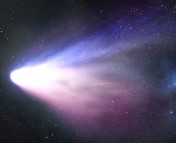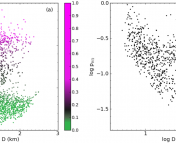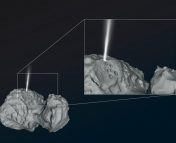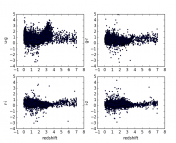
The undergrad research series is where we feature the research that you’re doing. If you’ve missed the previous installments, you can find them under the “Undergraduate Research” category here.
Are you doing an REU this summer? Were you working on an astro research project during this past school year? If you, too, have been working on a project that you want to share, we want to hear from you! Think you’re up to the challenge of describing your research carefully and clearly to a broad audience, in only one paragraph? Then send us a summary of it!
You can share what you’re doing by clicking here and using the form provided to submit a brief (fewer than 200 words) write-up of your work. The target audience is one familiar with astrophysics but not necessarily your specific subfield, so write clearly and try to avoid jargon. Feel free to also include either a visual regarding your research or else a photo of yourself.
We look forward to hearing from you!
************
Maria Vincent
University of California, Los Angeles
Maria Vincent is an undergraduate graduating with highest honors in Geophysics and Astrophysics, this Fall from the University of California, Los Angeles. She completed this research as a part of her senior thesis under Prof. David Jewitt. She will be presenting these results in the upcoming Division for Planetary Sciences (DPS) Meeting.
Comets, sometimes referred to as cosmic snowballs, are small bodies known to contain dust, ice, carbon dioxide, carbon monoxide, and other similar gases. They are the carriers of the most primitive materials in the Solar System. What we see of a comet are its tail and coma, however, most of the mass of the comet is contained within a small central region called the nucleus. When the comet gets close enough to the Sun, the nucleus heats up and the volatiles sublimate, creating a coma.
Comets are divided into two groups based on their orbital period: long period comets (LPCs) and short period comets (SPCs). LPCs have orbital periods of 200 years or more, while those of SPCs are less. The orbits of SPCs are distributed in the plane of the solar system. On the other hand, LPC orbits are nearly isotropic. The physical differences between the two kinds are not well understood. It is generally assumed that LPCs lack a mantle, therefore their comae should be largely homogenous. SPCs, on the other hand, are thought to have formed with a mantle which may cause jet-like features in the coma. The presence of such a mantle is inferred from the comet’s anatomy rather than directly observed.
The differences in coma morphology of these two classes of comets may be explained by the contrast in the environments and conditions under which they were formed. This could have caused compositional differences that affect the appearance of the comae when the comets orbit close enough to the Sun and begin sublimation. The dust on the nucleus that is carried into the coma due to sublimation can be studied through spectroscopic analysis and give insight into the composition of the nucleus.
In this project, I reduced CCD (charge coupled device) images of comets from the WIYN 0.9-m telescope with the Half Degree Imager camera at Kitt Peak National Observatory (KPNO). With these images, I analyzed the comets’ physical characteristics by performing aperture photometry to obtain their apparent and absolute magnitudes and creating a compilation of the morphologies of the SPC and LPC comae in order to compare their appearances and determine the implications on the formation of their nuclei, specifically the presence of a mantle. These results are shown in Figure 1.
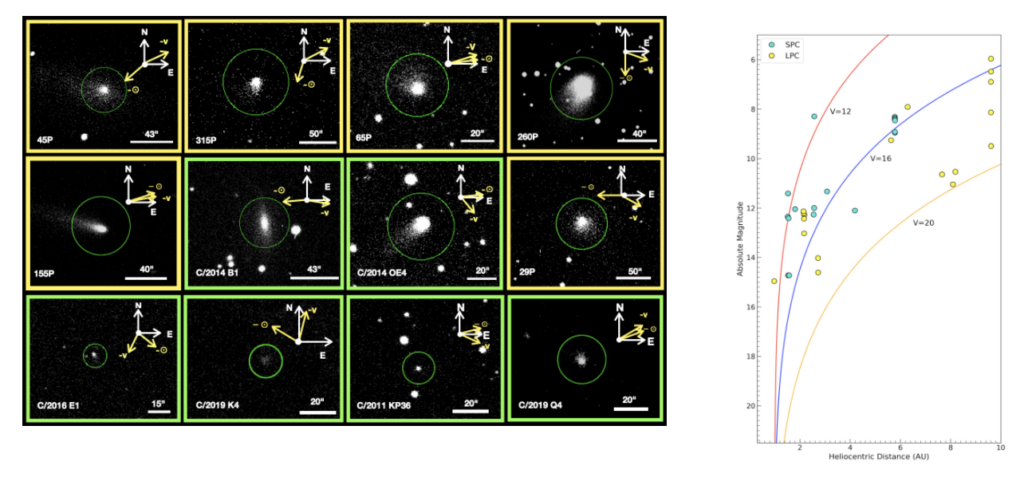
Comets, being remnants from the early days of the Solar System, can have had mantles only for a time less than the age of the Solar System, meaning the sublimation and mantle formation must have been a fairly rapid process. SPCs return to the inner Solar System more often than LPCs, due to their significantly shorter orbital periods. Hence they have experienced enough repeated sublimation that a mantle can be created in short timescales. If the mantle grows from mass loss then newly-arriving LPCs should be less mantled than SPCs.
The creation of a mantle requires just enough material that is detached from the nucleus to form a separate layer. This is achieved during sublimation of volatiles. To constrain the presence of a mantle, we searched for localised activity and peculiar morphological features in the coma of a comet created by this sublimation — fans, jets, corkscrews, spirals, and dust and plasma tails. We found that such features are mostly absent in LPCs, and if present they are attributed to the rotation of the nucleus, rather than the presence of a mantle. For the SPCs, those features were more or less present in the comae, suggesting the presence of a dust mantle. For some comets however, owing to viewing geometry and poor image resolution, it is not clear whether the observed morphology is a reliable indicator of the presence of a dust mantle.
If you are an undergraduate that took part in an REU this summer and would like to share your research on Astrobites, please contact us at [email protected]!

